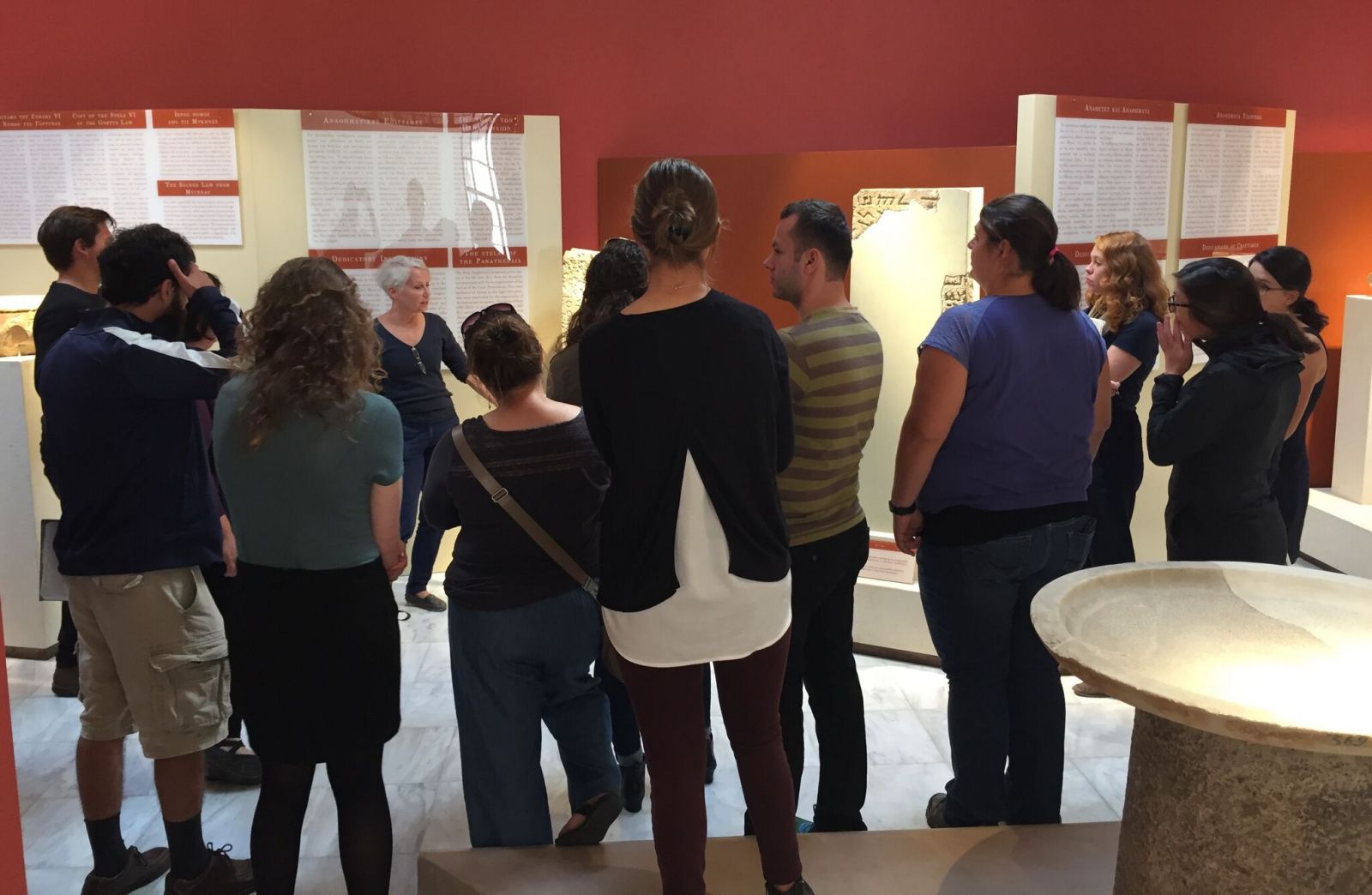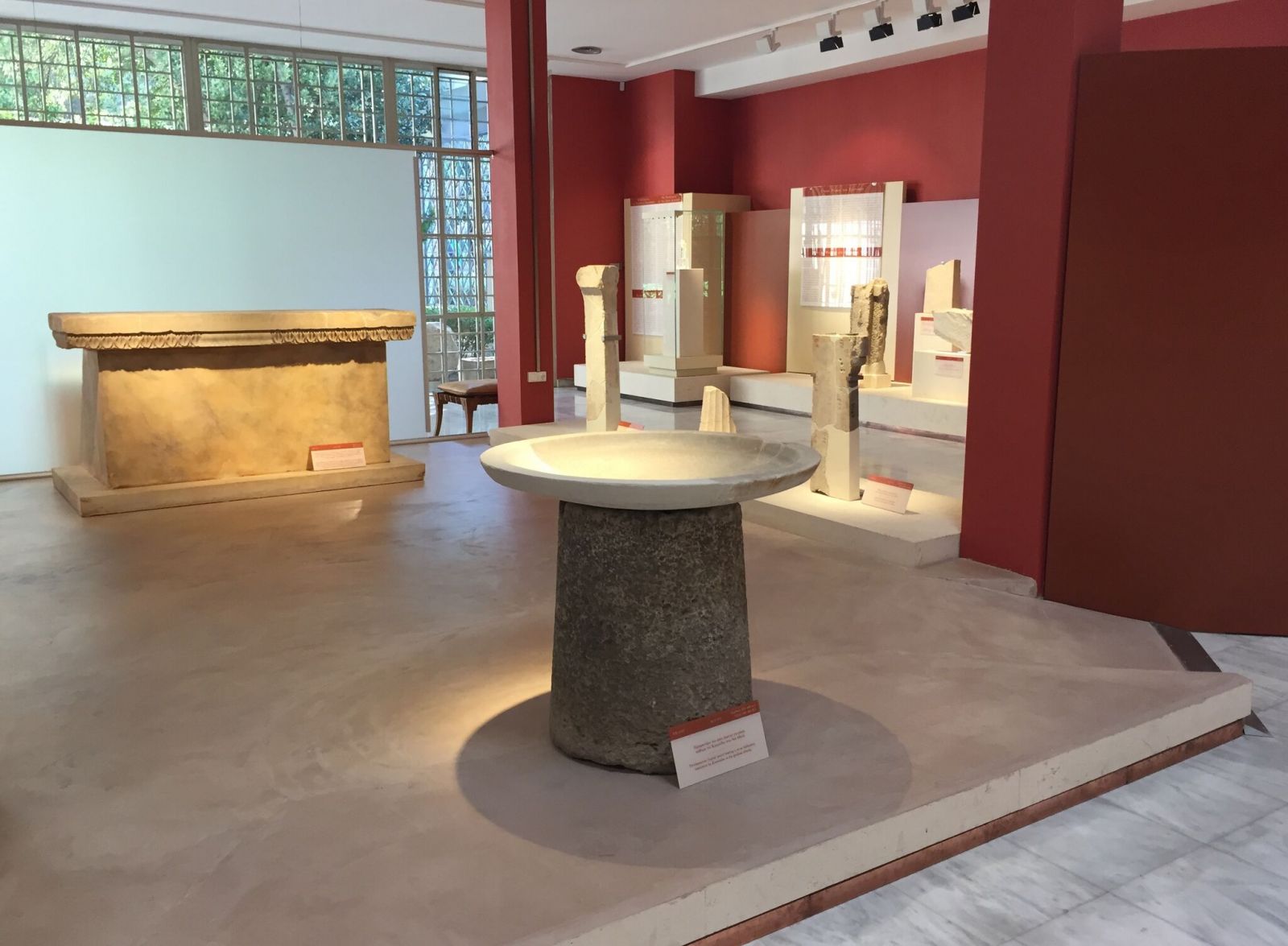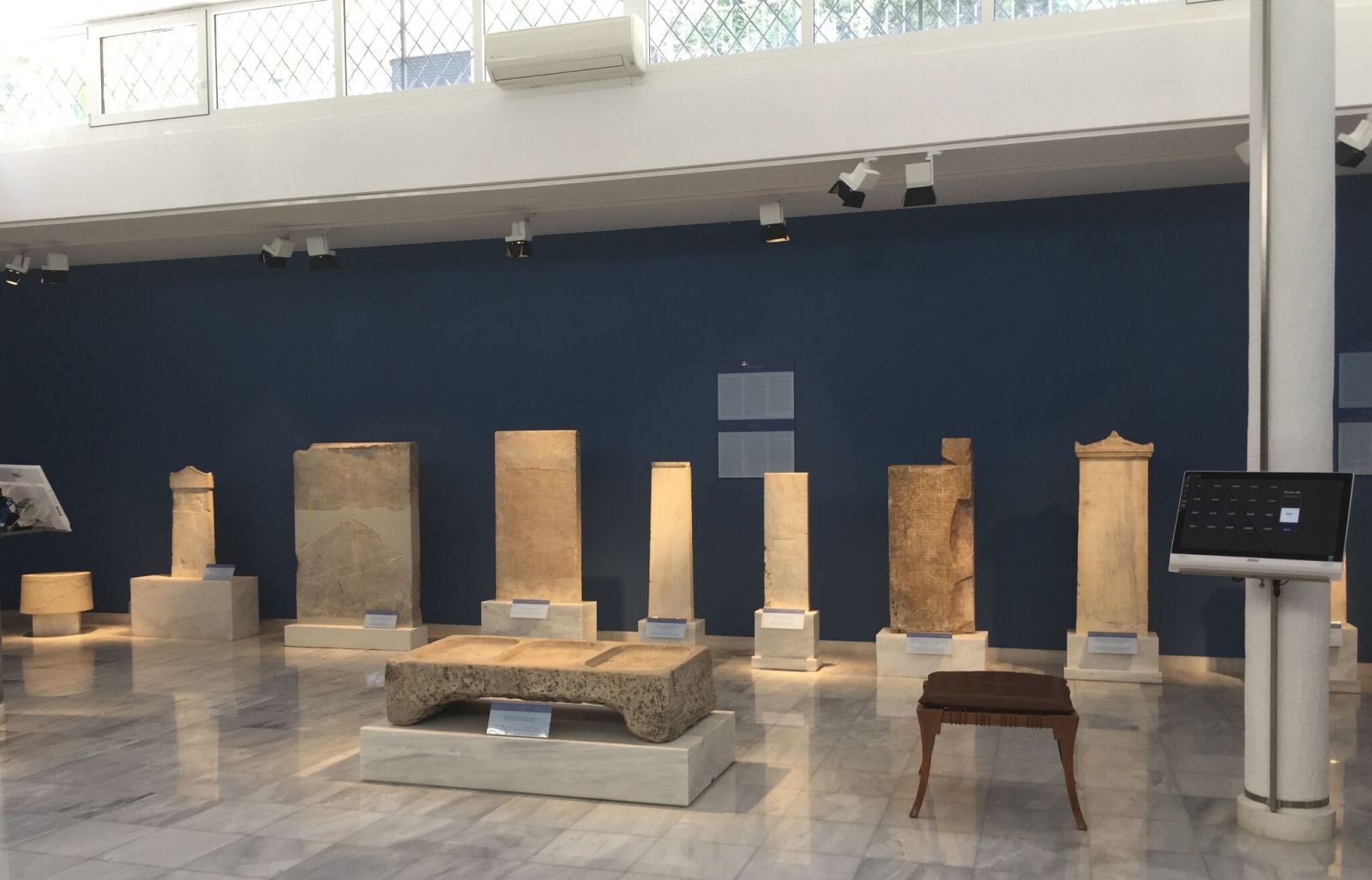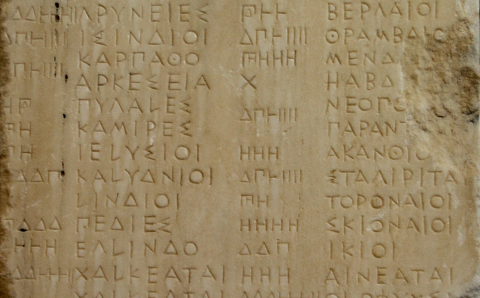Laura Gawlinski
December 10, 2018
Prof. Laura Gawlinski takes a look at the newly renovated Epigraphic Museum in Athens and notes the ways in which museums are working to make their holdings more accessible for students, teachers, and the public.

Renovated Room 11. Molly Richardson (ASCSA/ SEG) introduces the EM to members of the Regular Program of the American School of Classical Studies at Athens.
Many readers of the SCS blog have had the pleasure of carrying out research at the Epigraphic Museum in Athens. If you haven’t visited in a while, it is well worth stopping by to see the results of the recent renovations of its two main exhibition rooms, celebrated in a grand opening ceremony on May 25, 2017.
Many of the inscriptions have been reorganized into thematic displays enhanced by new plaques that provide contextual information. Room 11, for example, features a helpful discussion of “early Greek alphabets” alongside some of the earliest texts, as well as a section focused on “dedicators and dedications.” In Room 9, the visitor will find background information on both “ancient decrees” and the “public funerary monuments to the war-dead.” The new organization highlights the complicated choices behind museum displays, particularly the challenge of trying to account for both chronological and thematic considerations at the same time.

Room 11: Altar of Peisistratos, son of Hippias.
In addition to the new plaques, there are also touch-screens for looking up the text of the inscriptions. The conservator Stergios Tzanekas designed and made some of the new plaster supports for fragmentary inscriptions. One especially creative arrangement deserves mention: the altar dedicated by Peisistratos to Apollo (IG I3 948) is now set on a raised platform, introduced by a perirrhanterion (IG I3 914), and flanked by bases for dedications. The didactic plaques and thoughtful displays have increased the accessibility of this museumand made it easier for non-epigraphists to enjoy. In particular, I expect that a variety of undergraduate study abroad groups will find new ways to make use of the material. I encourage you to bring it to the attention of even your least-epigraphic classicist colleagues.
Thanks to the EM staff: Nasos Themos, Elena Zavvou, Eirini Choremi, and Stergios Tzanekas.
Reprinted with permission from the ASGLE Bulletin. The ASGLE Affiliated Group Panel will be held at the annual SCS meeting in San Diego, Saturday, January 5, 2019 8:00-10:30 am and will address “Writing the History of Epigraphy and Epigraphers.” For more on the preliminary program, click here.

Room 9: Public documents, touch-screen at right.
Authors


